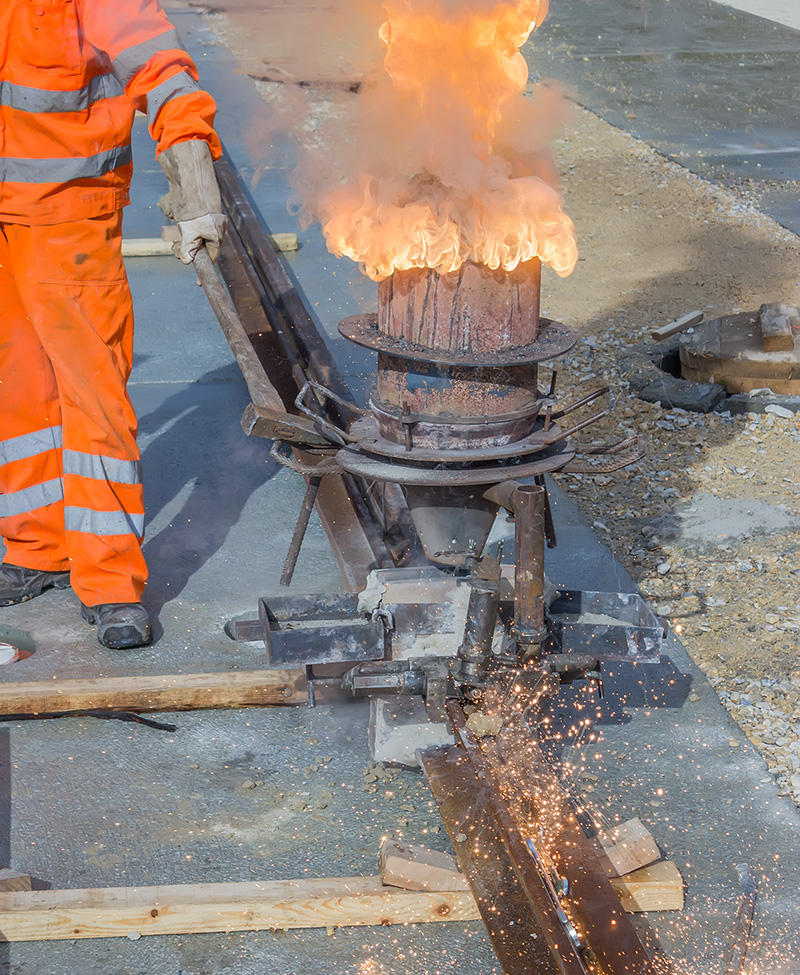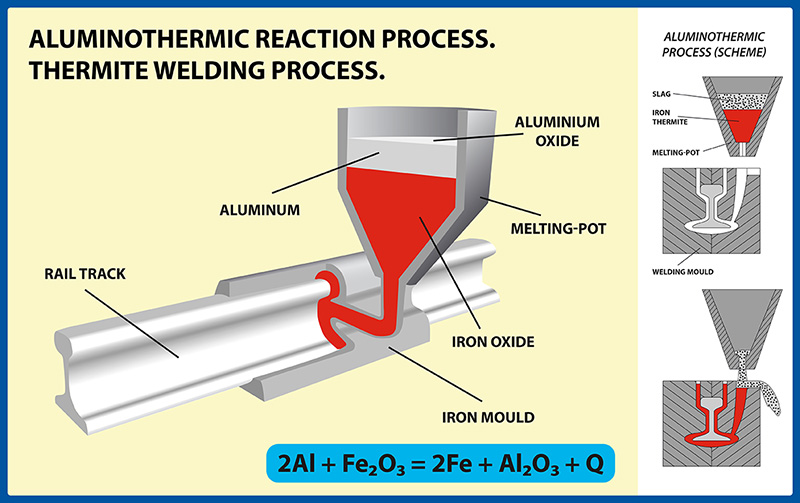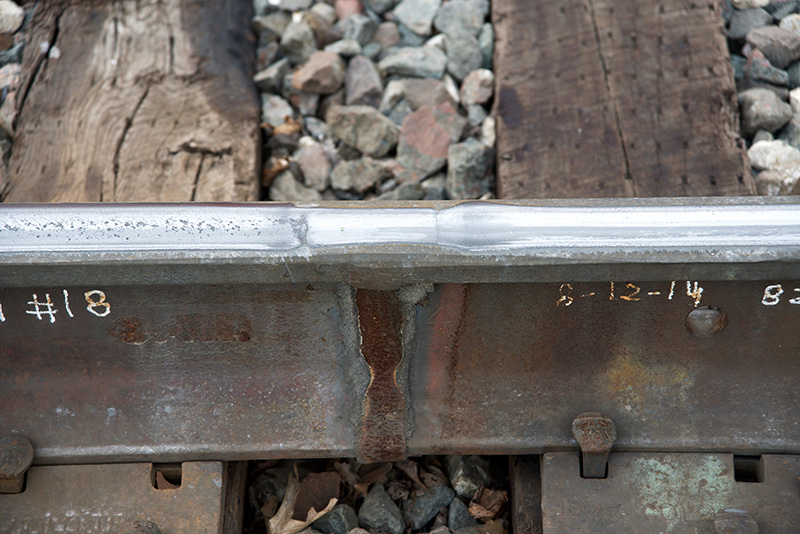The Fiery Art of Thermite Welding: Forging Indelible Bonds in the Rail Industry
 When it comes to maintaining the vast network of railroad tracks that crisscross our landscapes, there's no room for compromise. Safety, efficiency, and longevity are paramount. When an inspection reveals a section of railroad track that doesn't meet the stringent standards required, it must be replaced promptly. But how do railroads seamlessly connect new sections to the existing rails, ensuring both functional integrity and structural resilience? This article explores an unconventional but undeniably cool process known as thermite welding that railroads employ to create indelible bonds between rails.
When it comes to maintaining the vast network of railroad tracks that crisscross our landscapes, there's no room for compromise. Safety, efficiency, and longevity are paramount. When an inspection reveals a section of railroad track that doesn't meet the stringent standards required, it must be replaced promptly. But how do railroads seamlessly connect new sections to the existing rails, ensuring both functional integrity and structural resilience? This article explores an unconventional but undeniably cool process known as thermite welding that railroads employ to create indelible bonds between rails.
The Need for a Unique Solution:
Traditional welding methods are often impractical in the field, given the sheer scale of the railway network and the remote, unforgiving locations where repairs are needed. The need for a technique that doesn't rely on high voltages and gas cylinders is clear. However, the rail industry demands something more than practicality—it demands sheer awesomeness and hardcore efficiency. This is where thermite welding takes center stage, making all other welding processes look like mere 4th of July sparklers.
You may recall thermite from your junior high science class. It's a simple mixture of aluminum powder and iron oxide (rust), seemingly inert until exposed to a high heat source, such as burning magnesium ribbon. What follows is a spectacular exothermic redox chemical reaction, wherein the aluminum powder strips oxygen molecules off the iron oxide. This reaction generates scorching temperatures exceeding 4,000°F, enough to burn a hole in the pavement. For the record, don't attempt this at home, unless you're a trained professional or channeling your inner MacGyver.

To weld rails using thermite, crews employ a ceramic crucible placed atop a mold covering the entire rail joint. Once ignited, the thermite reaction erupts in a dazzling display of sparks and flames, soaring high into the air—a spectacle that would impress even the most daring amateur fireworks enthusiasts. Within a short time, the rust powder transforms into molten iron, cascading down into the mold that surrounds the rail, effectively filling any gaps or cavities between the rails.
As the molten metals begin to cool and crystallize, they merge at the atomic level, creating an unbreakable, seamless connection. This process effectively turns multiple rails into a single, continuous rail. After further cooling, the disposable molds are shattered with sledgehammers, unveiling the newly joined rail beneath. Specialized machines are then employed to grind away any excess metal left by the mold, meticulously shaping, and honing the rail until all surfaces are sufficiently smooth. This ensures that trains glide along the tracks as if they were on a cushion of air.
 While the finishing process may generate copious sparks and noise, it pales in comparison to the hardcore awesomeness of thermite welding. The rail industry's reliance on this remarkable technique exemplifies its commitment to maintaining a safe, efficient, and seamless railway network. In the world of rail welding, thermite is the fiery, awe-inspiring solution that keeps trains rolling smoothly across vast distances.
While the finishing process may generate copious sparks and noise, it pales in comparison to the hardcore awesomeness of thermite welding. The rail industry's reliance on this remarkable technique exemplifies its commitment to maintaining a safe, efficient, and seamless railway network. In the world of rail welding, thermite is the fiery, awe-inspiring solution that keeps trains rolling smoothly across vast distances.

